At the beginning of the 20th century and more specifically in its second decade (1914-1918), the visual and architectural movements of the European avant-garde (futurism, cubism , constructivism, Bauhaus, etc.), rejected both the academicism and the adherence of their predecessors to History, considering that its patterns were completely disconnected from the then contemporary reality. The Modern Movement in architecture, which began shortly before the outbreak of World War I, proceeded in the 20s and 30s to completely reject tradition and highlight metaphor and functionality, i.e. functionalism.
Another artistic avant-garde current that made its appearance and also greatly influenced modern architecture, was minimalism, a radical and dynamic movement, but open to many "interpretations" and without being expressed or "bounded" by any manifesto. In its general outline, it concerned specific - austere and clean for the most part - formalist principles and limiting the work to its absolutely necessary material or visual components.
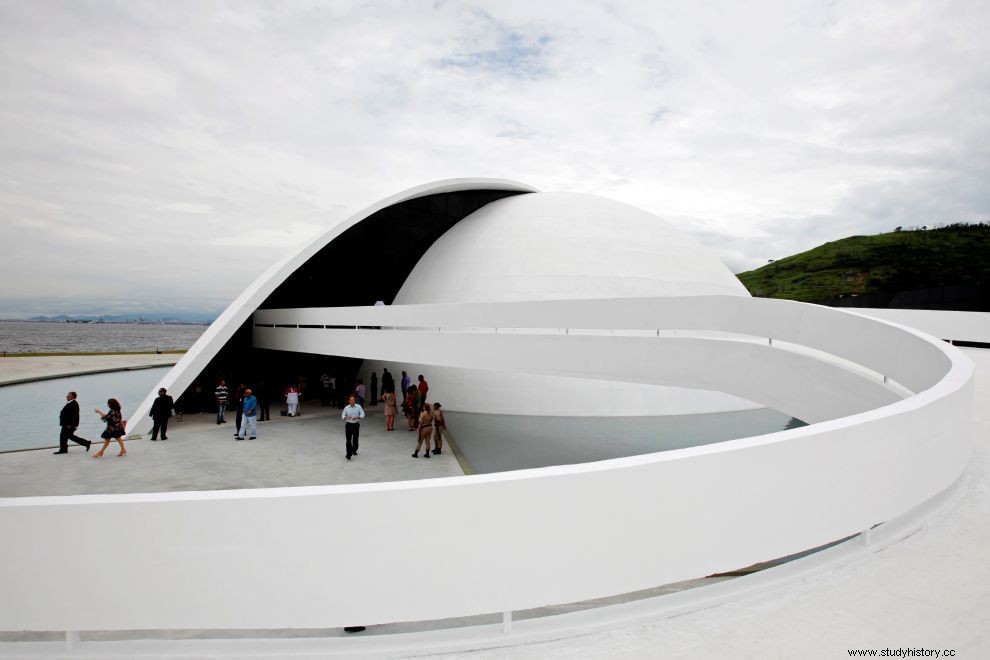
Symmetry and repetition, dominant elements of minimalism, found their ally in the games of light, which in turn relied on the materials used in the new trends, such as transparent plexiglas , galvanized iron and reinforced concrete, especially since the "secular order" of the mechanical straight line, opened the borders to the harmony of the curve, leading to a coupling of architectural aesthetics with the already catalytic "industrial" influences.
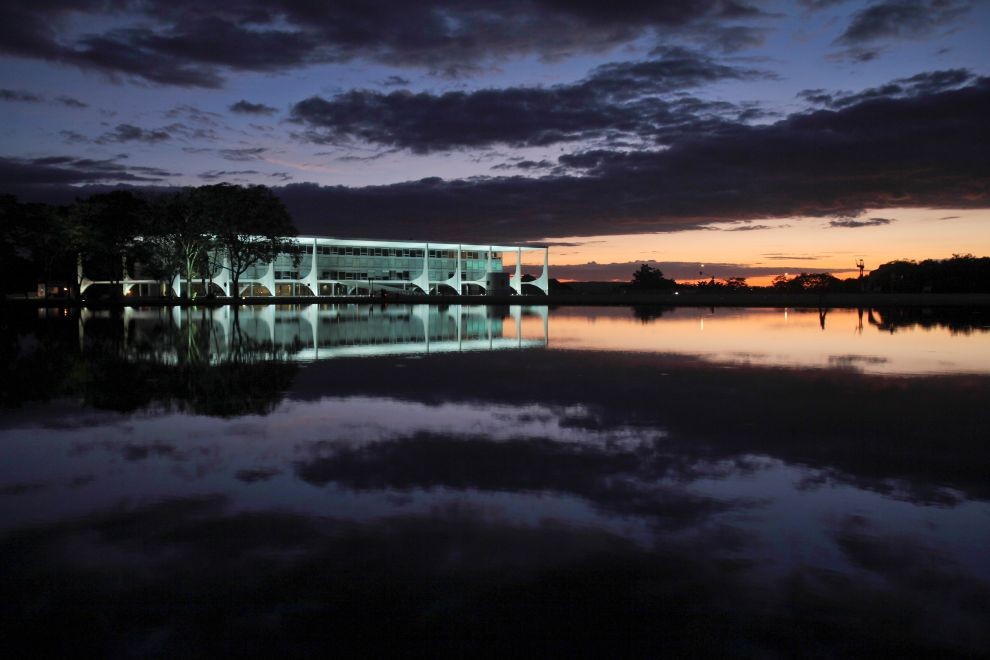
One of the most important representatives of this modern architecture, which dominated as modernity, redefining the limits of necessity for a different perception of patterns and materials, was the Brazilian Oscar Niemeyer, a great visionary of the new doctrine that came to be known as "International Style". This year marks ten years since his death (5/12/2012) and Magazine attempts a small retrospective of his work, which offered us a wonderful and distinct architectural code.
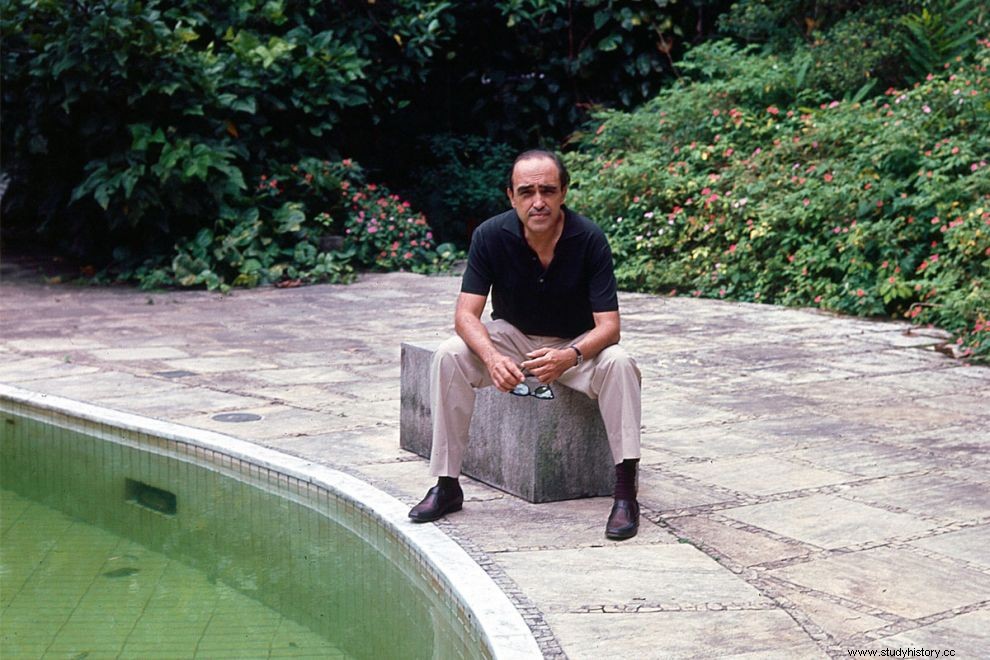
Niemeyer was born in December 1907 in Rio de Janeiro, from a wealthy family. Spending a carefree adolescence, in 1928, at the age of 21, he married Anita Baldo, the daughter of Italian immigrants from Padua, and soon after enrolled at the National School of Fine Arts in Rio, from where he graduated in 1934 with a degree in architecture. He then worked in his father's printing house, while at the same time he found himself as an unpaid apprentice in the architectural office of Lucio Costa and Gregory Varczavczyk, one of the founders of the Modern Movement in Brazil.
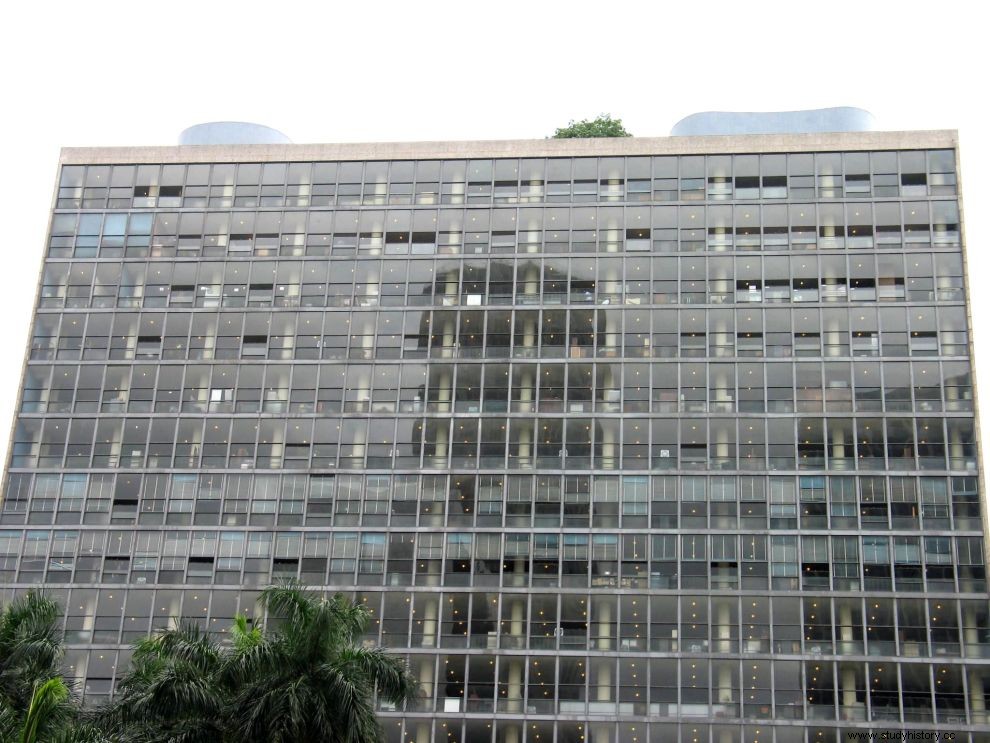
In 1936 Costa's office was commissioned to design the building that would house the Ministry of Education and Health in Rio. Costa assembled a team of young architects and invited his famous colleague Le Corbusier to advise on the project. The acquaintance with the Swiss architect was decisive for Niemeyer, who collaborated with him in the design of the building, gaining credit for its "magnificent perspectives". After Le Corbusier left Brazil, Niemeyer made many changes to the original designs, impressing Costa.
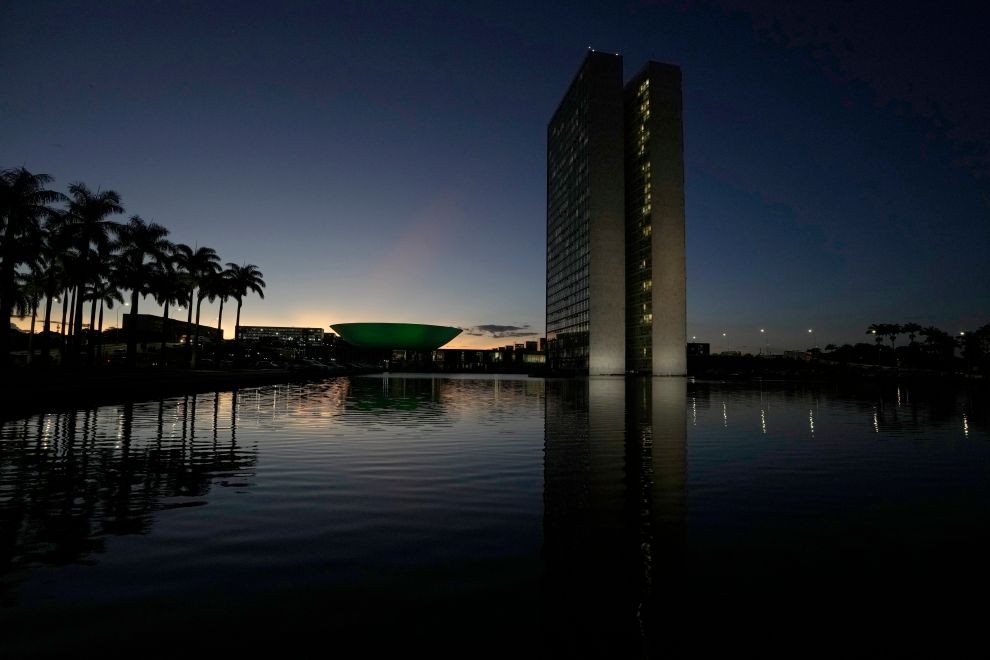
From 1939 onwards, Niemeyer led the project, completing in 1943 the world's first state-funded skyscraper based on the principles of modernism, on a much larger scale than anything Le Corbusier himself had designed up to that point. Local materials and techniques were used in the building, such as azulejos, painted glazed ceramic tiles, while everywhere the industrial "finish" was evident, but combined with bright colors in the interior, but also in the surrounding area, clear "allusions" to the images of the Brazilian landscape .
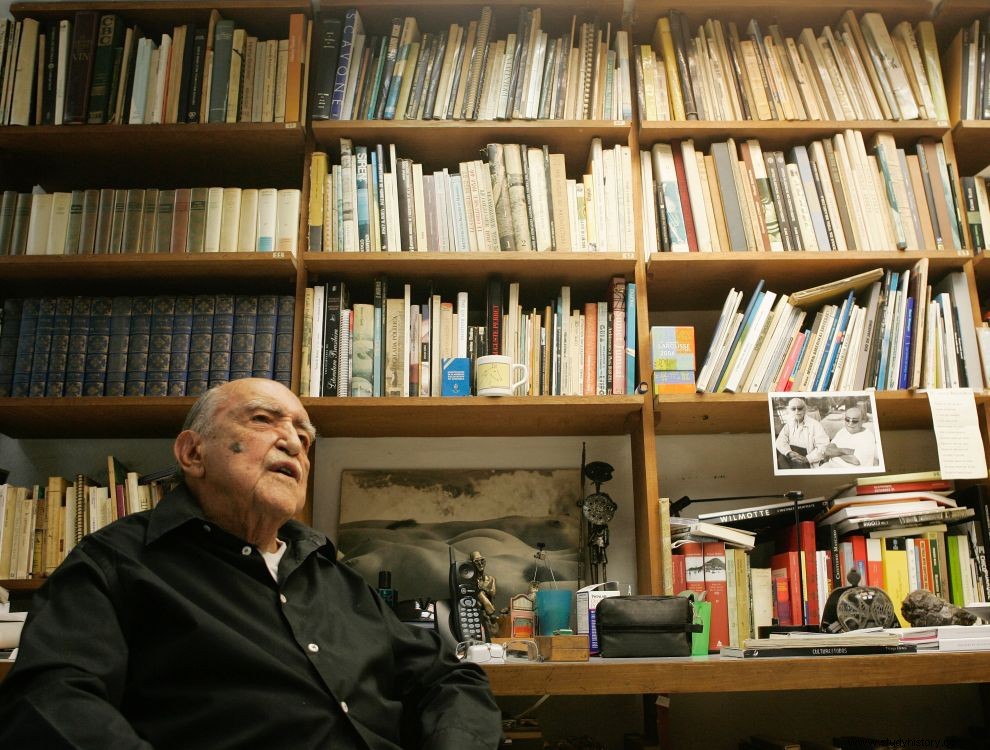
Niemeyer also applied Le Corbusier's revolutionary brise-soleil, placing in the permanent frame of the building a series of blinds in light blue , which were adjusted with special levers through the offices, depending on the season and weather conditions, in order to allow or block the sunshine, and thus the internal temperature. The project was considered one of the most influential architectural proposals in the 20th century and the first authentic example of the Brazilian Modern Movement.
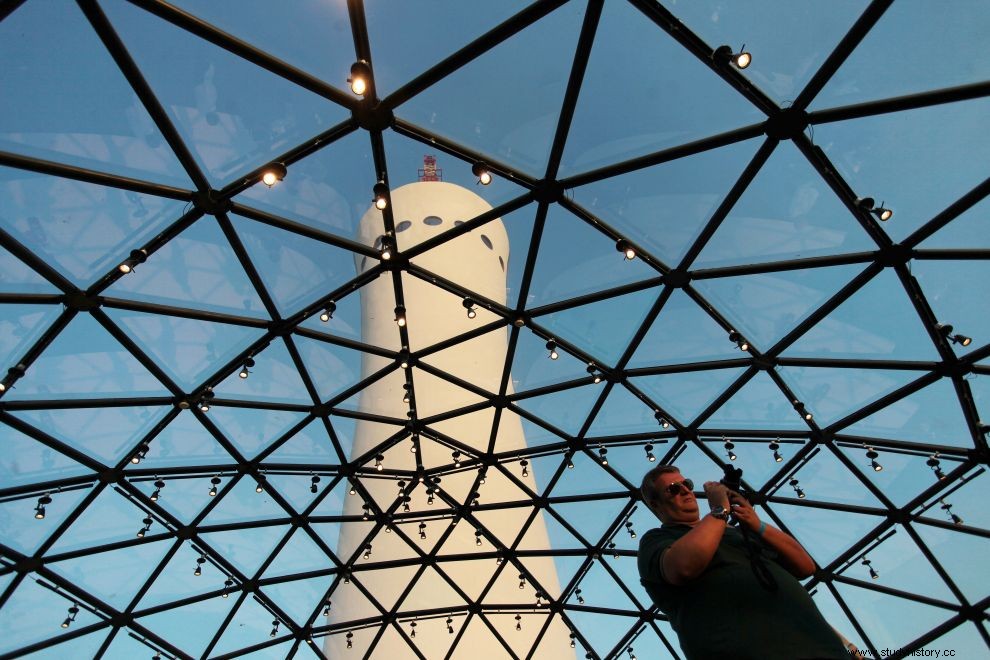
As early as 1940, Niemeyer had started the project which for him was his real architectural beginning. At the invitation of the mayor of Belo Horizonte, Juscelino Kubicek, he undertook the design of a series of buildings in Pampulia (a growing suburb of Belo Horizonte), a complex that would include a casino, a restaurant/ballroom, a nautical club with a marina, a golf club and a church, all around a man-made lake. The project was completed in 1943 and made Niemeyer famous all over the world.

In the buildings of Pambulia , the Brazilian architect achieved something unique:on the one hand, he let his influences from Le Corbusier be clearly seen, but on the other hand, he did not hesitate to escape from them, putting his personal perception of modernity in the designs, giving a leading role to curved volumes, while he went even further with the application of the Swiss built environment, placing floating ramps and platforms in the lake, which gave a new, different dimension both to the walk of the visitors, and to the view of the buildings around the lake.
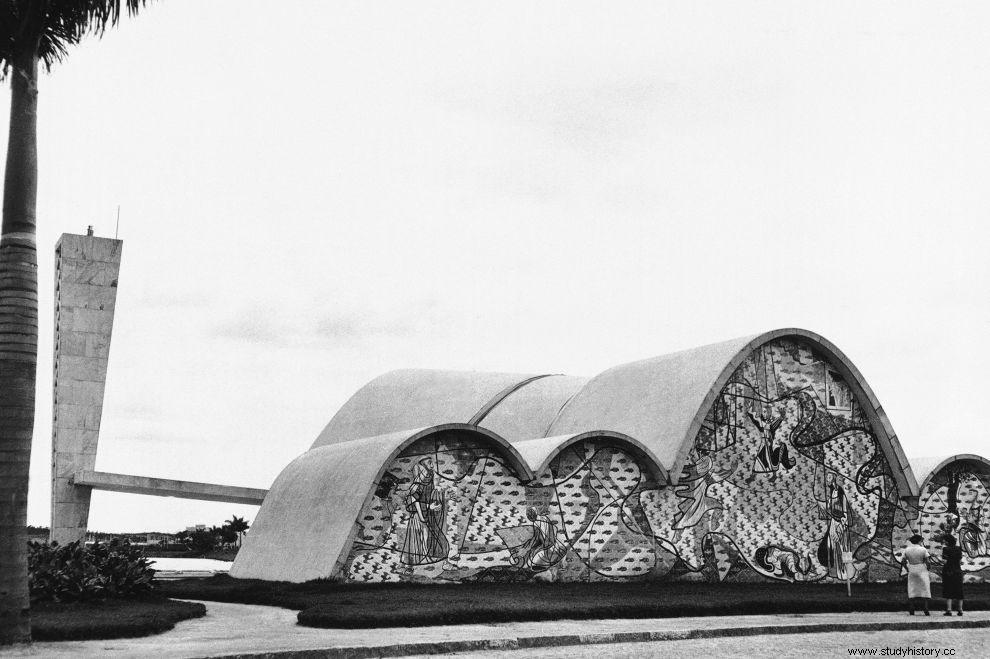
The church of Saint Francis of Assisi , was considered the band's masterpiece. Niemeyer used reinforced concrete (reinforced concrete), in a completely revolutionary way, relying on the inherent plasticity of the specific material. It unified walls and ceiling, i.e. presenting the horizontal and vertical elements of the construction as one. In this way, he presented a new concept of simplifying functionality without the traditional synthetic logic, opening even greater horizons in the identification of architecture with art itself.
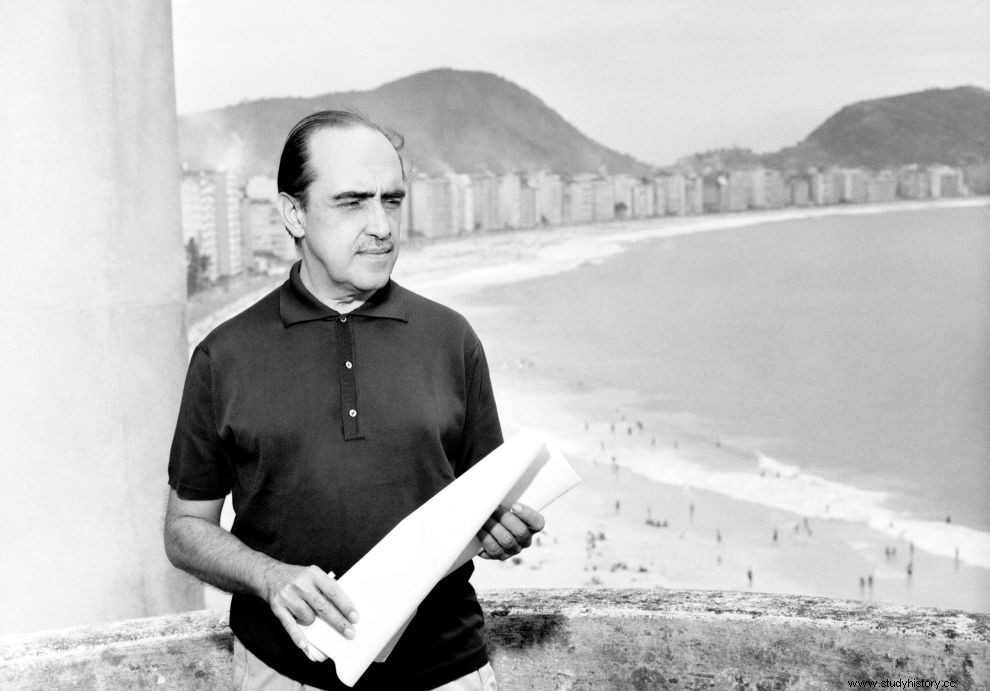
The structural "reason" of the church completely escaped traditional definitions, constantly changing angles in the perspective of its autonomy within the space, next to the shore of the artificial lake, seeking and achieving a wonderful balance, which translated into a distinctive religiosity, completely in harmony with the environment. Nevertheless, the reactions from "traditional conservative circles" were fierce, demanding the demolition of the temple, which fortunately was saved thanks to the intervention of the National Service of Artistic and Historical Heritage of Brazil.
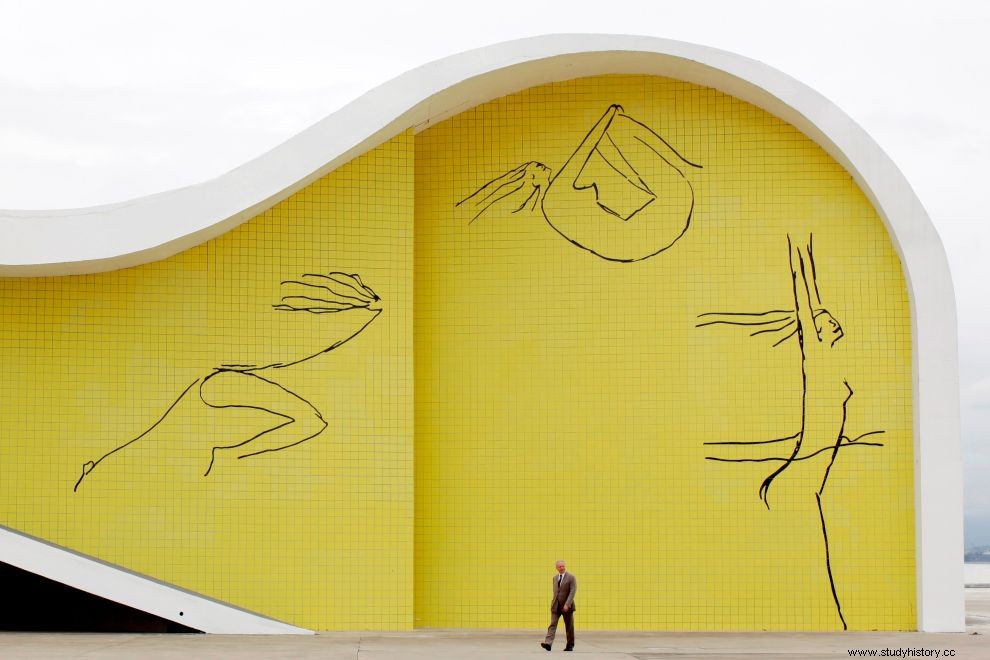
Niemeyer had stated that Pampulia offered him the opportunity to challenge the monotony of modern architecture and the wave of misinterpreted functionalism, which neutralized the plastic freedom introduced by reinforced concrete. "I was drawn to the curve, the liberated, sensuous curve. I deliberately ignored the right angle and rational architecture, designed with ruler and triangle, to boldly enter the world of curve and straightness offered by reinforced concrete. All this deliberate protest came from the environment I lived in, with its white beaches, huge mountains, old baroque churches and beautiful sun-kissed women," were his words.
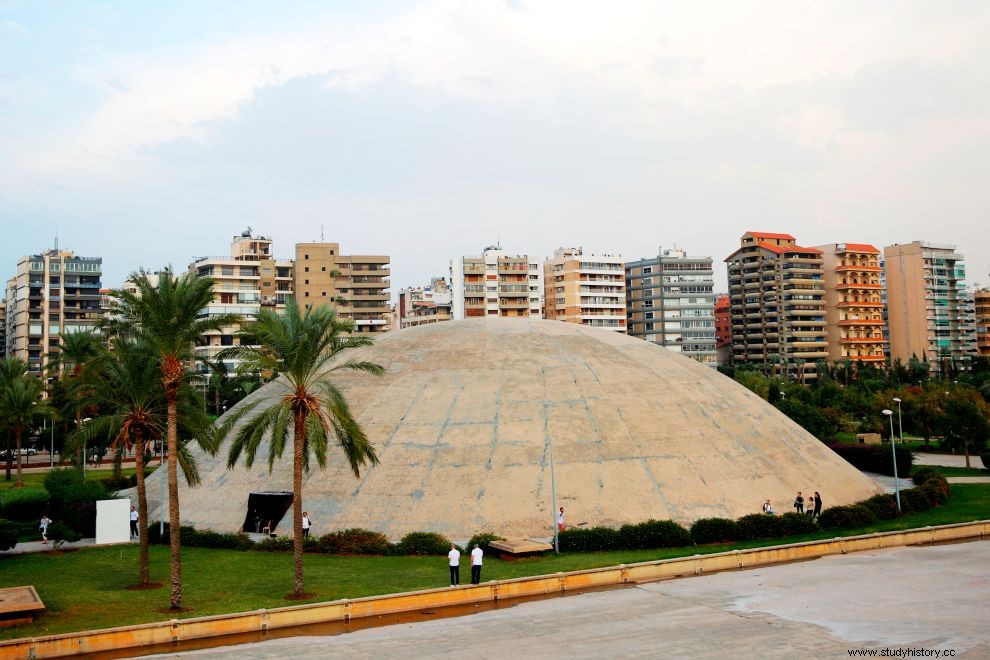
Niemeyer now enjoyed international recognition, the architectural circles they considered that he had developed even more the so-called "Brazilian style", with his most representative works being the Ministry of Education of Rio and the church of Pampulia, which were characterized as pioneering in the Modern Movement. His genius handling of scale and proportion allowed him to constantly find new innovative proposals, solving complex problems with simple and clever designs.
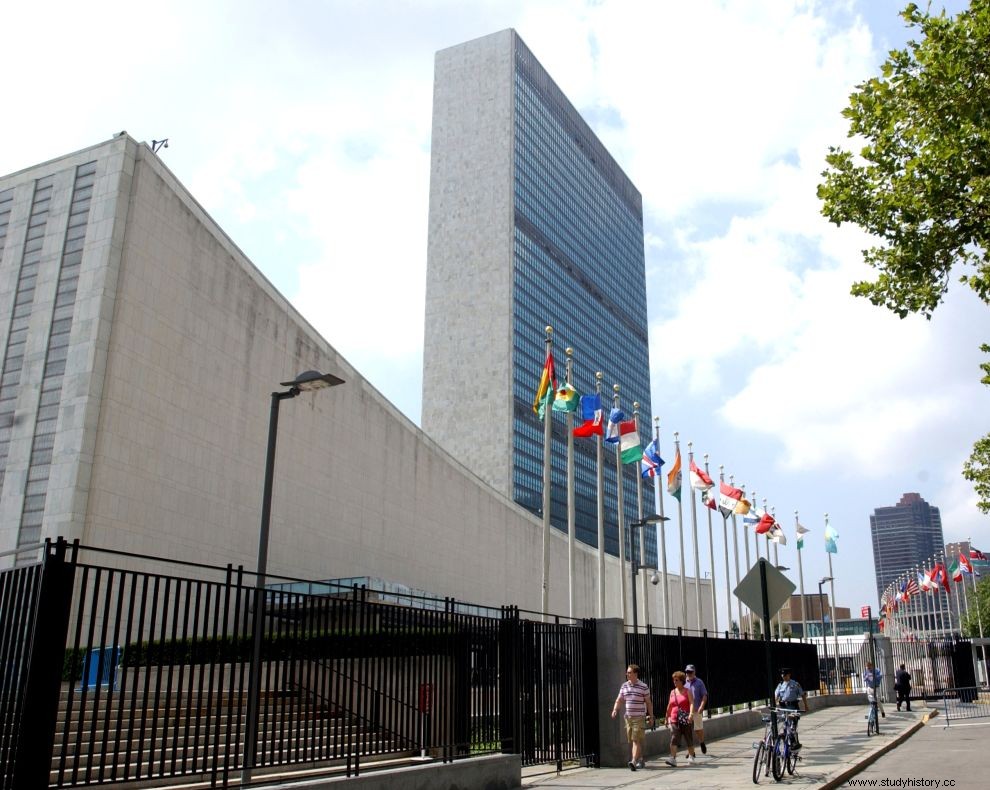
In 1947 he undertook, together with Le Corbusier and a group of architects, the design of the building that would house the headquarters of the United Nations in New York. Niemeyer's design "32" was the one that got approval from the relevant planning committee, but after pressure from Le Corbusier, design "23/32", a combination of the two architects' proposals, was finally selected. Niemeyer's stay in the US was short and episodic because he was a member of the Brazilian Communist Party.
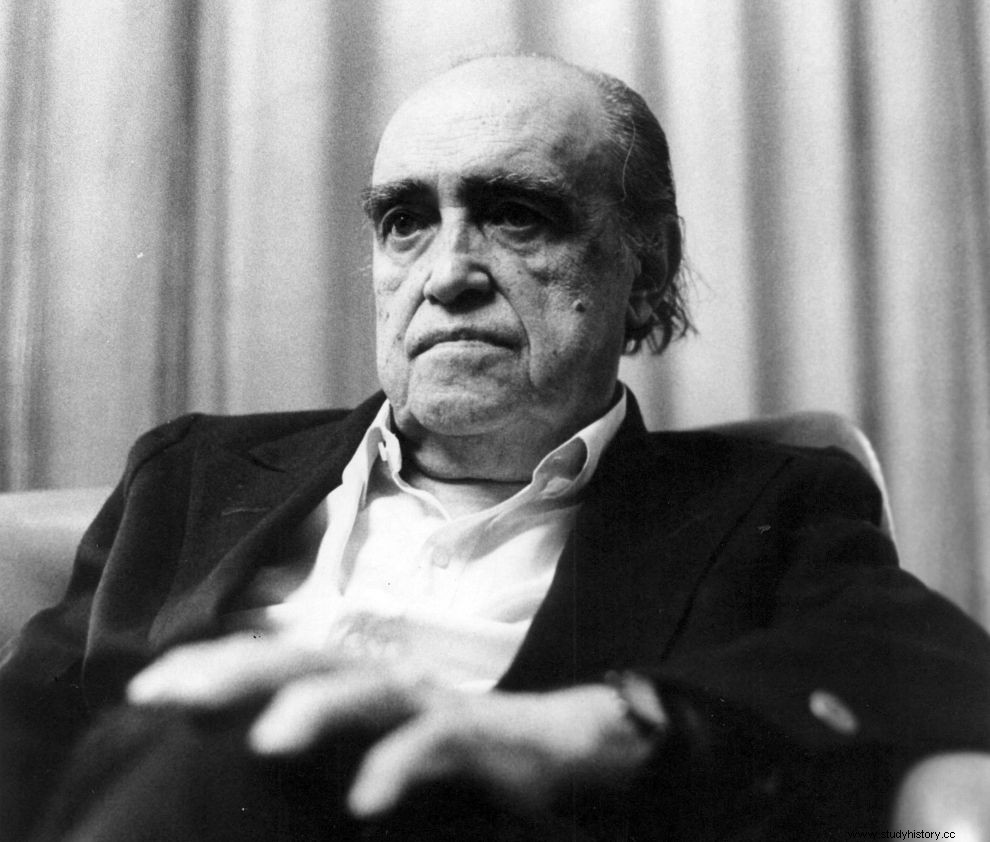
The Americans did not renew his visa, which happened several times in the following years. In 1946, Niemeyer was invited by Yale University to teach a seminar, but the US refused to issue him a visa. The climax came in 1953, when the School of Design at Harvard University , awarded him the title of dean, but the American government banned him from entering the country! Despite these obstacles, Niemeyer continued to design and create, taking on more and more projects.
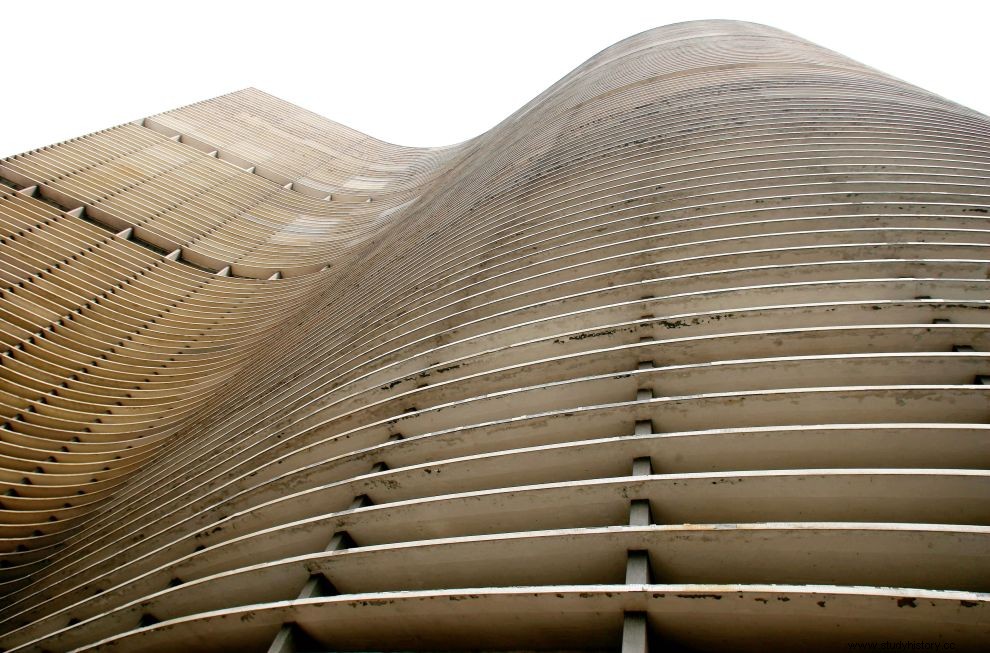
One of his most iconic creations was the apartment complex "Copan" (1953-1956) in São Paulo, a real landmark for the Brazilian metropolis. The skyscraper, 118 meters high, with the completely free form of the building, formed in the wider context of the so-called "people's apartment building", followed the standards of Le Corbusier's unité d'habitation (residential unit), however, escaping from the logic of the Swiss about of standardized architecture, since the wavy shape gave a completely new perspective to the forms of modern regulatory urbanism.
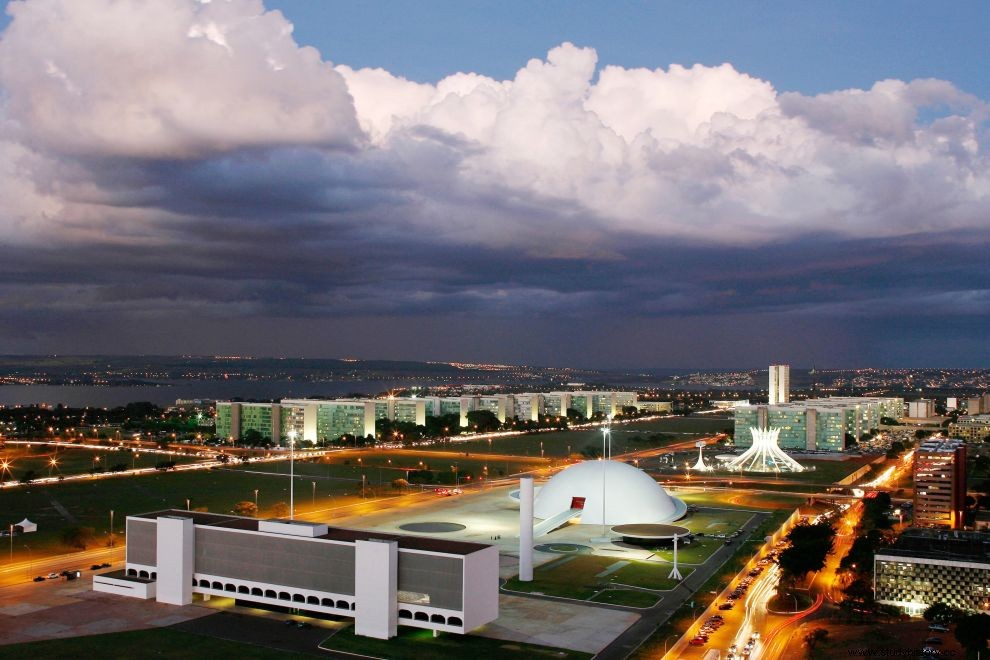
In the year that "Copan" was completed (1956), the newly elected president of Brazil, Juscelino Kubicek (who 16 years before, as mayor of Belo Horizonte, had commissioned his countryman architect to design Pampulia), met Niemeyer to discuss with him his most daring vision, the building of the country's new capital, Brasilia . Niemeyer's old mentor and friend, Lucio Costa, won the competition and took over the urban planning, while Niemeyer himself would be responsible for the design of the major buildings.
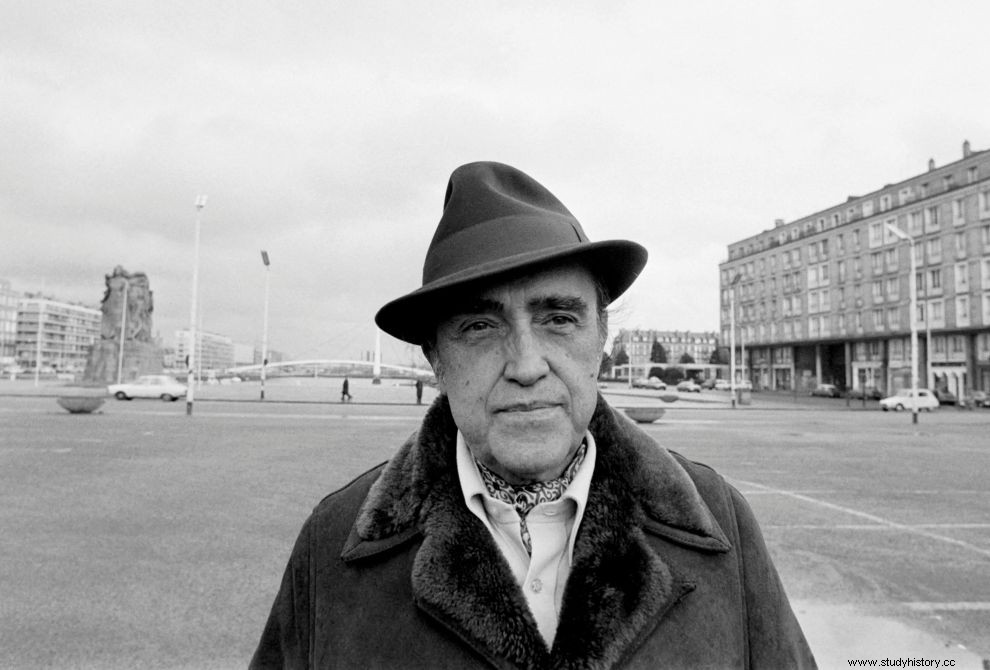
The creation from scratch of an entire city was the realization of a utopia. In just 41 months, a unique achievement was completed, which in 1987 was declared by UNESCO as a world cultural heritage site (Niemeyer became the first living person whose work received this recognition). "The one who will visit Brasilia, he may like it, he may not. But in no case can he say that he has seen something similar elsewhere before", he said in an interview in 2006, defending his work, although he himself he preferred to live in Rio, "next to the sea, the mountains and its chaos".

Niemeyer designed residential units, commercial and government buildings in Brasilia. He collaborated with Costa in the design of the open spaces, beautifying the outlook and enhancing the local spirit. He turned his interest to the "spectator" who walks among the elements of a structural ensemble and who, by changing his perspective, transforms it into the landscape itself. In the perspective of the logic of modernity , his free forms offered art either with their flowing lines, or with his constant bold inventions in the correlation of elements.
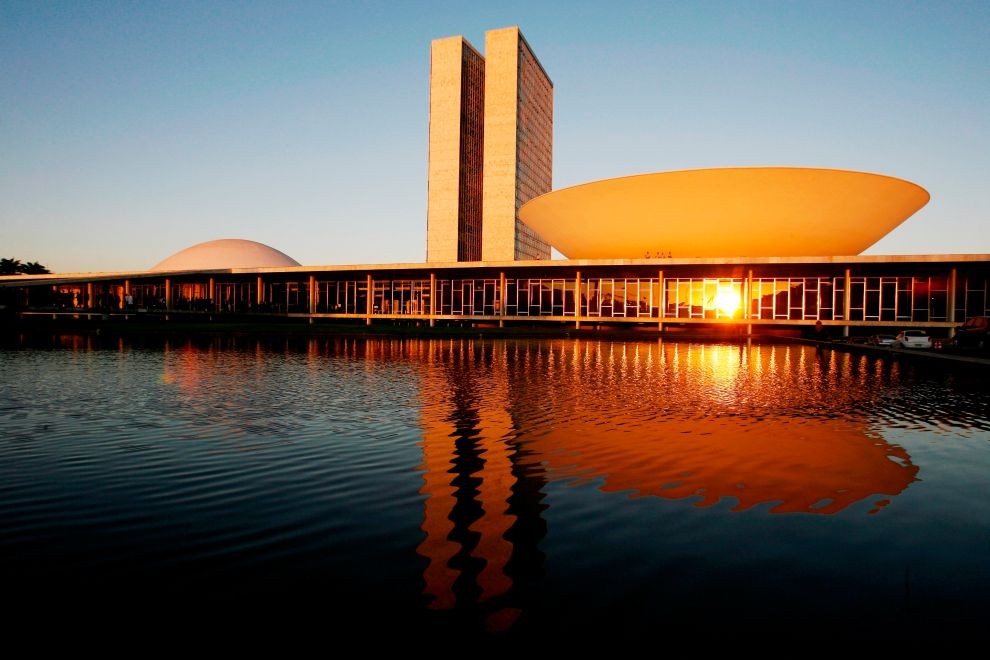
On the famousEsplanade, in the center of Brasilia, Niemeyer "placed" representative samples of all his formalist principles:built "forms" of simple geometric buildings that recalled some kind of "sensory" constructivism, curves and arcs that referred to sculptures, long "bare" distances between buildings, which, precisely because they were ordered with a regularity in space, imprinted the three-dimensional perspective in relief, ultimately delimiting his personal codes through his "ideological" architectural barometer.
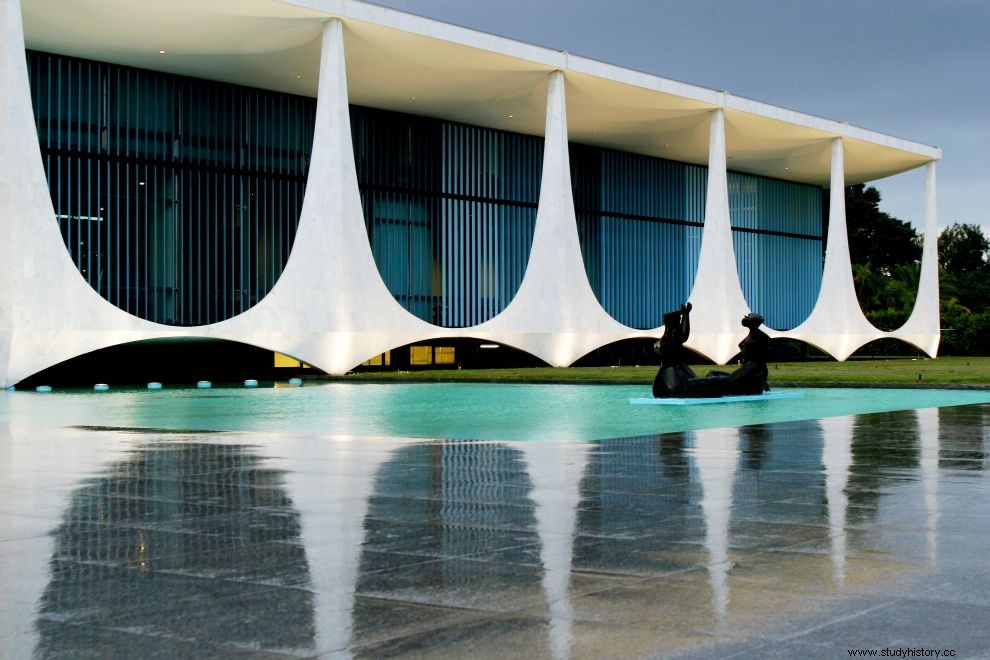
Niemeyer's most important works in Brasilia were the presidential residence (Palácio da Alvorada), the Brazilian National Congress with the House of Representatives and the Senate, the Ministries, the National Museum, the National Library, the Supreme Federal Court and one of his greatmasterpieces , the Cathedral of Nossa Senhora Aparecida. All these were placed in such a way on the vast Esplanade as to reconcile the concept of regulatory urbanism with a series of buildings intended to play the role of "social transformers", creating the "new man".
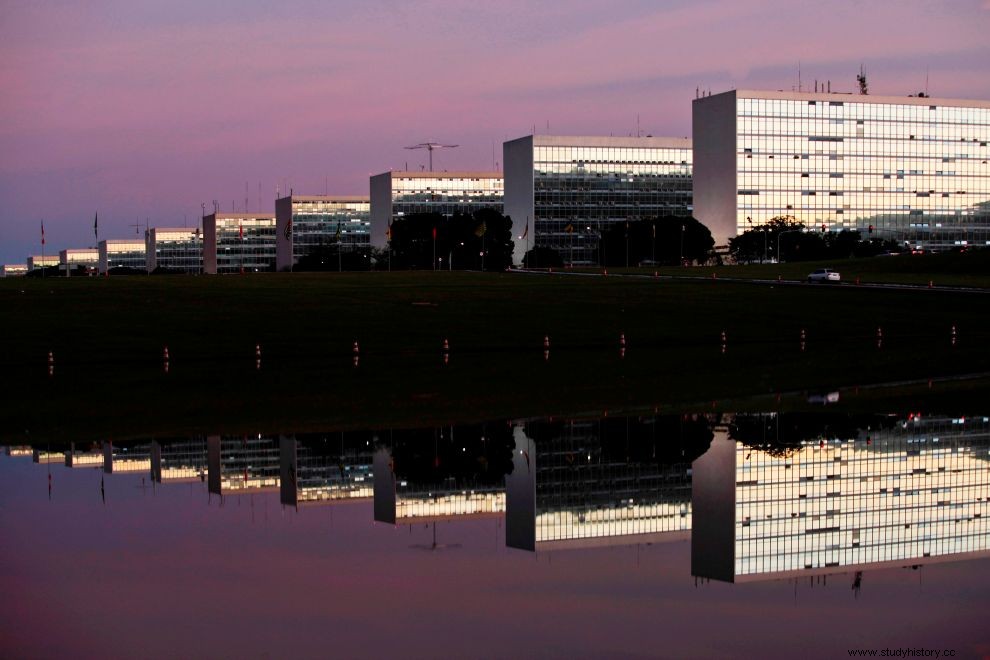
The whole project adopted a socialist ideology:in Brasilia all apartments were owned by the government and rented to employees. The city had no "rich" quarters, which meant that top ministers and ordinary workers would share the same building. Of course, the specific logic was either ignored or changed by the following presidents of the country, but the progressive spirit of the original "recipe", even if it was characterized as utopian later, never ceased to impress.
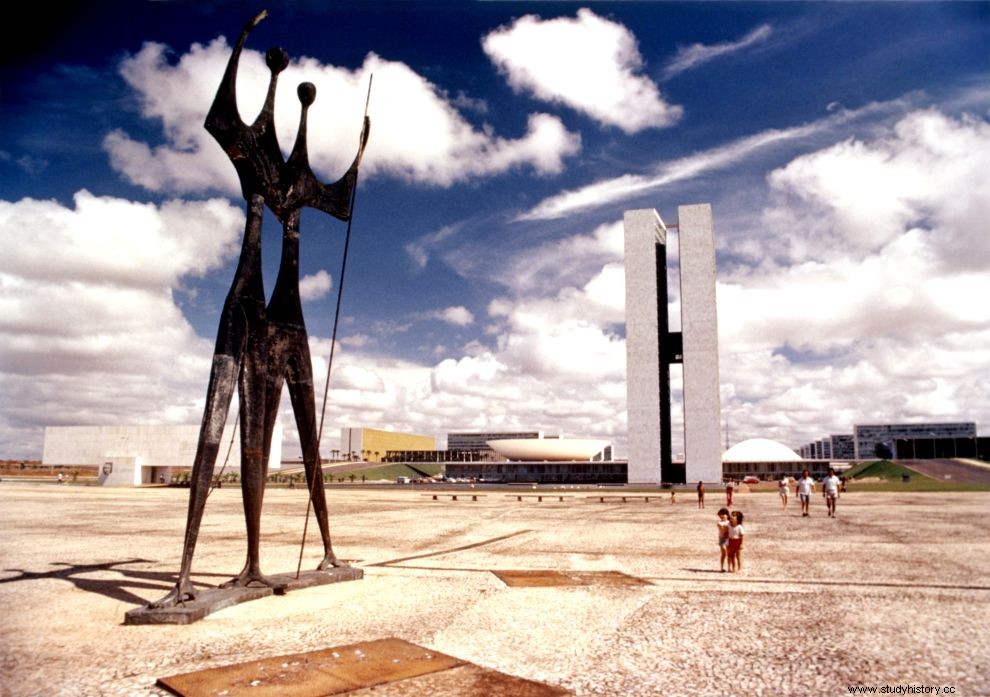
The Praça dos Três Poderes (Square of the Three Powers), where the Esplanade ends, was in fact the beginning and the end of the Monumental Axis, which together with the second axis, the Traffic, according to Costa's plan, gave Brasilia the plane shape , while the sculpture that stood in its center was Niemeyer's tribute to the thousands of workers (Os Guerreiros, warriors) who built the city. The atmosphere, the proportions, the lines and curves, the features of the space and the design choices, all of these emerged through a rare "dialectic" of architectural intellect, between Costa and Niemeyer.
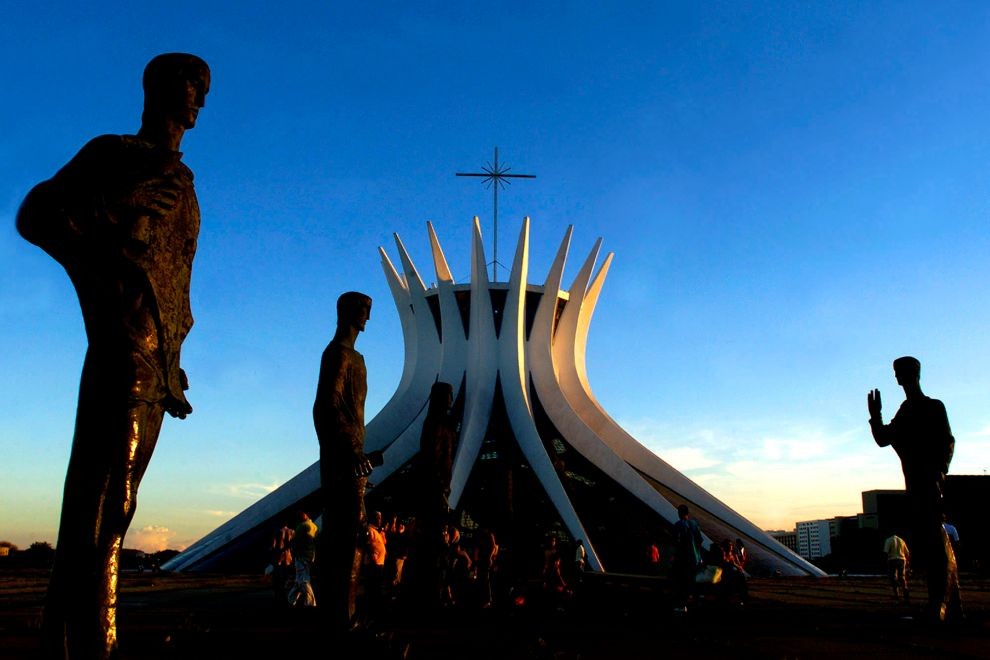
As we mentioned above, Niemeyer's most outstanding work in Brasilia was the Cathedral. It is a hyperbolic structure (a hyperbolic structure with negative Gaussian curvature, i.e. it curves inwards), consisting of 16 concrete columns, each weighing 90 tons. The curves these pillars converge at the center of the structure and then curve outward as they rise to the top. Between them are wonderful ceramic and glass stained glass windows, which let light enter the interior from every possible angle.
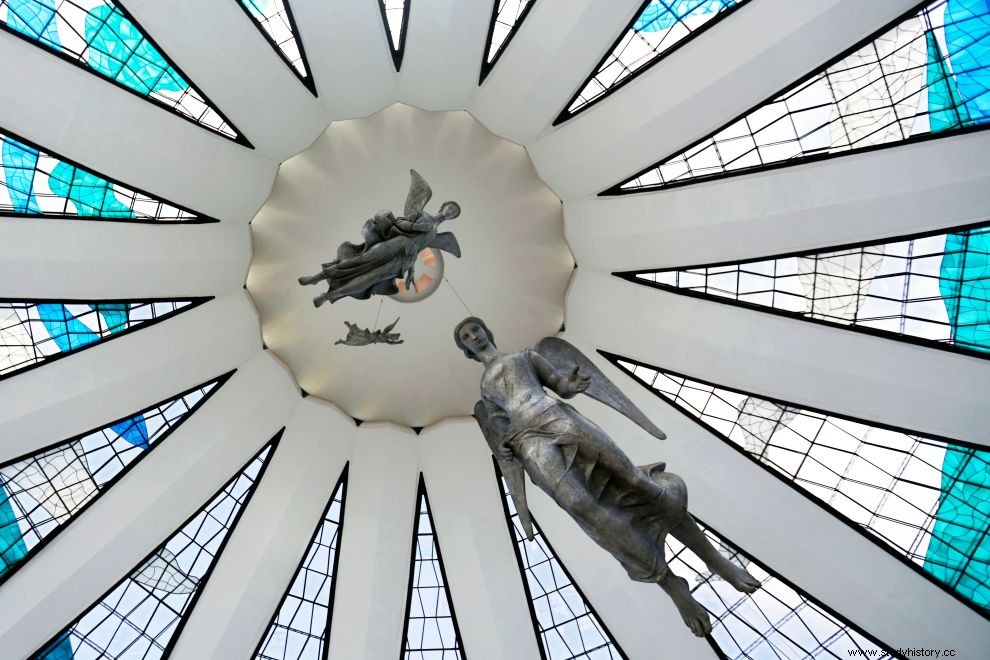
The church, completed in 1970, has a capacity of 4,000 people, while three angels, sculptures by Alfredo Ceschiatti, in different heights and sizes (ranging from 2.2 meters to 4.2 meters o everyone). Most of the temple is below the surface of the ground, leaving only the hyperboloid structure-roof protruding from it (diameter at the base 70 meters and at the top 42 meters). In the surrounding area there are four bronze sculptures representing the fourEvangelists , while the bell tower is 20 m high and has four bells, donated by Spanish residents of Brazil.

After the completion of the Brasilia project, Niemeyer was named dean of the University of Brasilia's School of Architecture, and in 1963 he was awarded the title of honorary member of the American Institute of Architects. On May Day of the same year, he was awarded the Lenin Peace Prize from the Soviet Union (at the same ceremony, where the specific prize was also awarded to Manolis Glezos). In 1964, General Castelo Branco staged a coup, establishing a military dictatorship in Brazil.
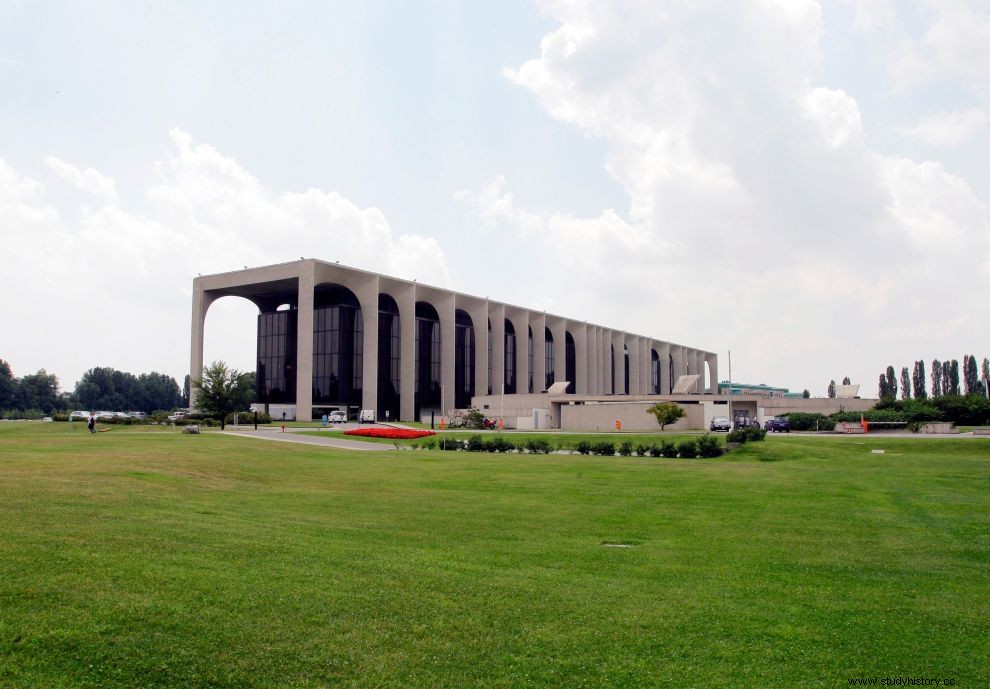
The political beliefs of Niemeyer, who continued to be a member of the Communist Party , τού στοίχισαν ακριβά. Το γραφείο του λεηλατήθηκε, η έδρα του περιοδικού Nosso Caminho, το οποίο συντόνιζε ο ίδιος, καταστράφηκε τελείως και οι πελάτες του εξαφανίστηκαν. Το 1965, διακόσιοι καθηγητές του Πανεπιστημίου της Μπραζίλια - ανάμεσά τους και ο Νιεμάιερ - παραιτήθηκαν από τις έδρες τους σε ένδειξη διαμαρτυρίας για την αντιμετώπιση των πανεπιστημίων και των φοιτητών από την κυβέρνηση. Έναν χρόνο αργότερα, ο Βραζιλιάνος αρχιτέκτονας αυτοεξορίστηκε στο Παρίσι.
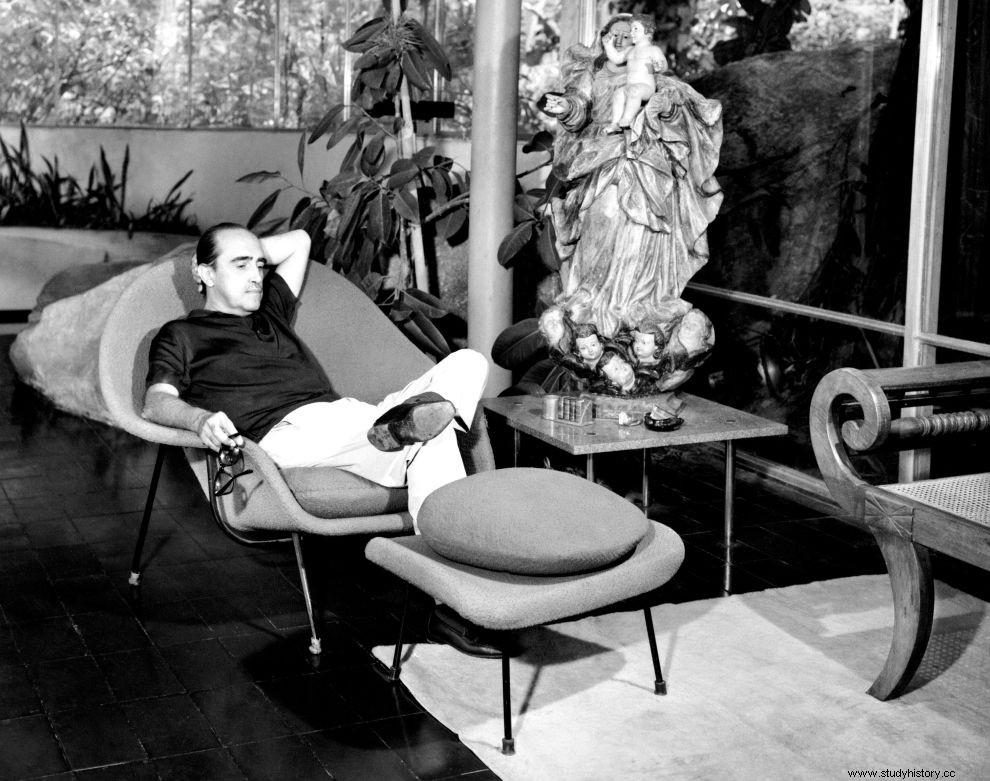
Αφού άνοιξε ένα γραφείο στα Ηλύσια Πεδία, άρχισε να σχεδιάζει κτίρια σε διάφορα κράτη, όπως στην Αλγερία, την Ιταλία, την Πορτογαλία και φυσικά τη Γαλλία. Κατά την παραμονή του στη γαλλική πρωτεύουσα, ο Νιεμάιερ ξεκίνησε να σχεδιάζει και έπιπλα, κυρίως καρέκλες και πολυθρόνες (που τοποθετήθηκαν στις έδρες των Κομμουνιστικών κομμάτων σε όλον τον κόσμο), αλλά και τη θρυλική "Ρίο σεζ-λονγκ". Όπως στα κτίριά του, έτσι και στα έπιπλά του, κυριάρχησαν οι καμπύλες, με σαφείς αναφορές στη Βραζιλία και πηγές έμπνευσης το γυναικείο σώμα και τους λόφους του Ρίο ντε Τζανέιρο.
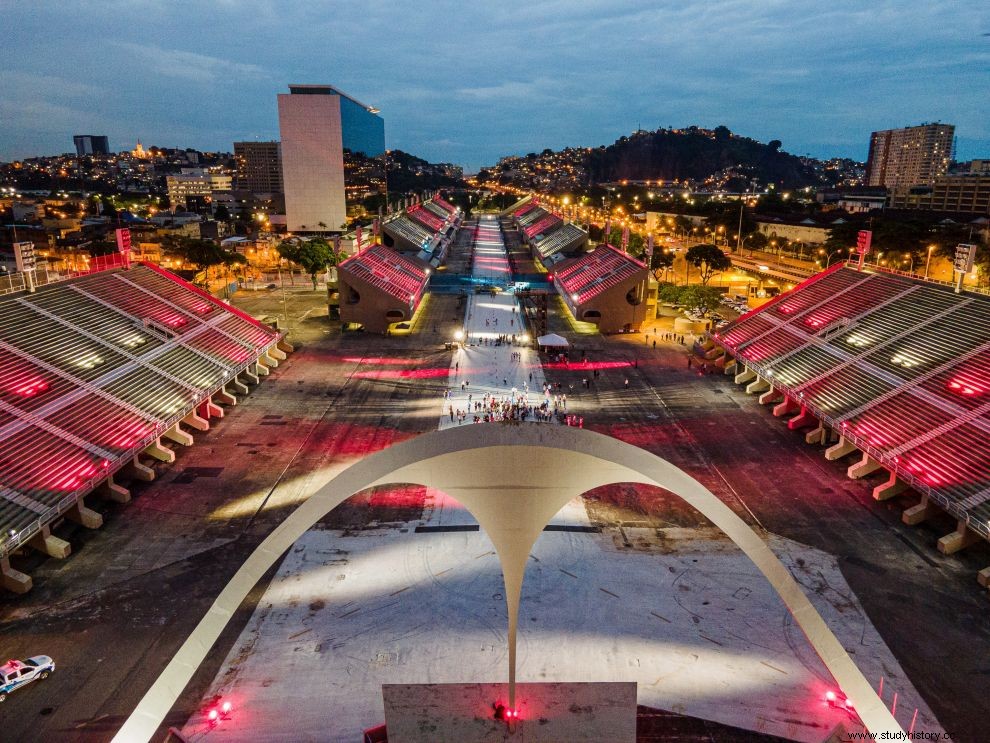
Στα μέσα της δεκαετίας του '80, όταν αποκαταστάθηκε η δημοκρατία, ο Νιεμάιερ επέστρεψε στην πατρίδα του και παρά την ήδη μεγάλη του ηλικία (κοντά πλέον στα 80), συνέχισε να είναι άκρως δημιουργικός, σχεδιάζοντας το ένα κτίριο μετά το άλλο, ανάμεσά τους και το περίφημο "σαμποδρόμιο" στο Ρίο ντε Τζανέιρο, εκεί όπου πραγματοποιούνται οι εντυπωσιακές παρελάσεις στο καρναβάλι της πόλης. Το 1988 τιμήθηκε με το κορυφαίο αρχιτεκτονικό βραβείο, το Pritzker Architecture Prize, γνωστό και ως "Νόμπελ της αρχιτεκτονικής". Από το 1992 μέχρι το 1996 υπήρξε πρόεδρος του Κομμουνιστικού Κόμματος της Βραζιλίας (PCB), βοηθώντας το με την παρουσία του να ξεπεράσει την κρίση ταυτότητας αλλά και επιβίωσης, μετά την πτώση της ΕΣΣΔ.
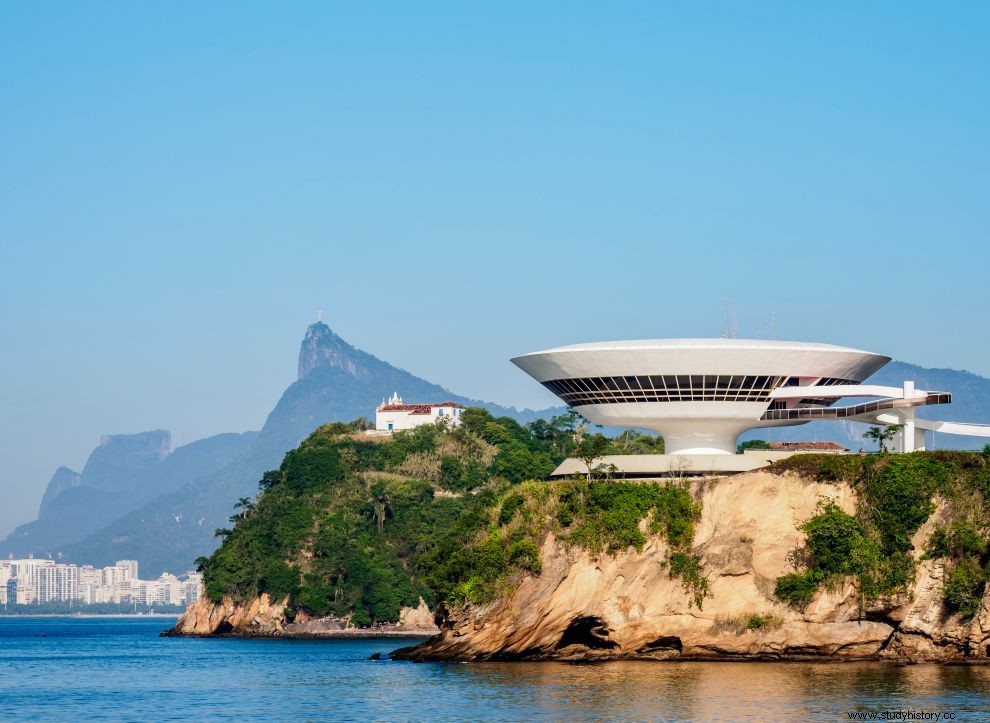
Το 1996, στα 89 του χρόνια, ανέλαβε να σχεδιάσει το Μουσείο Σύγχρονης Τέχνης του Νιτερόι (προάστιο του Ρίο ντε Τζανέιρο). Η κατασκευή έχει ύψος 16 μέτρα, η στέγη διάμετρο 50 μέτρα και μια υδάτινη "τάφρος" (έκτασης 800 τ.μ.) περιβάλλει την κυλινδρική βάση της "σαν ένα λουλούδι" , σύμφωνα με τα λόγια του Νιεμάιερ. Στους τρεις ορόφους του μουσείου εκτίθενται 1.217 έργα, ενώ από τη δυτική του πλευρά, η θέα προς τον κόλπο Γκουαναμπάρα, τον λόφο Pão de Açúcar, τον λόφο Corcovado (με το άγαλμα του Χριστού Λυτρωτή στην κορυφή του) και το Ρίο ντε Τζανέιρο, κόβει την ανάσα.
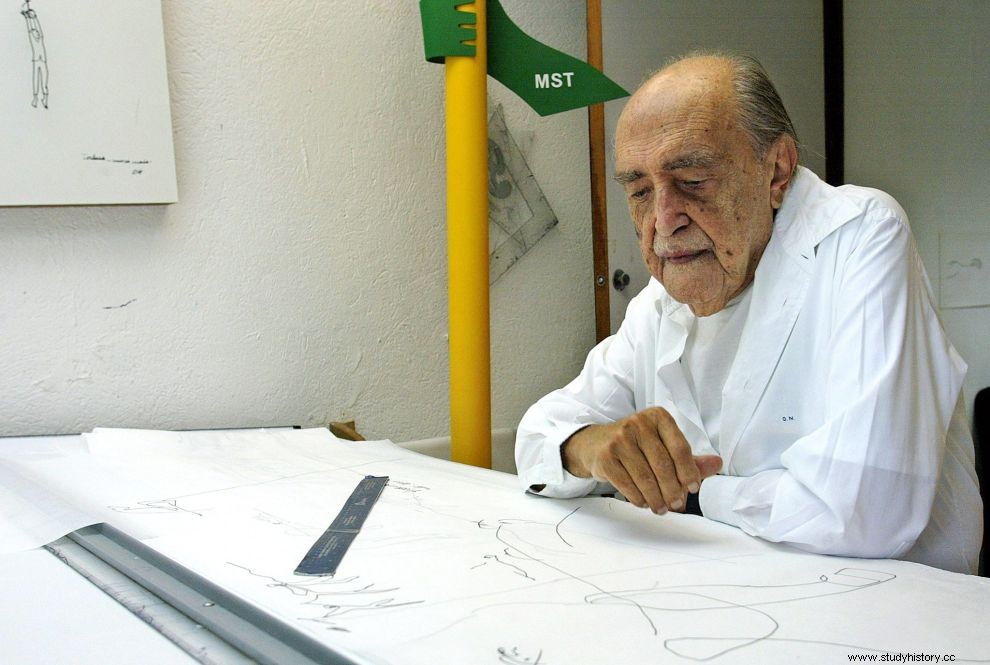
Το μουσείο, που θυμίζει UFO, τοποθετήθηκε στην κορυφή ενός βράχου , με τέτοιο τρόπο ώστε να δίνει την αίσθηση πως αιωρείται πάνω από αυτόν, με τη θάλασσα ακριβώς από κάτω του. Ο 21ος αιώνας βρήκε τον Νιεμάιερ θαλερό και ακμαίο να συνεχίζει τη δημιουργική του προσφορά, αναλαμβάνοντας συνεχώς καινούργια έργα σε όλο τον κόσμο και συνεχίζοντας να σχεδιάζει με έμπνευση και φαντασία στο γραφείο του στο Ρίο. Το 2011 εγκανιάστηκε στην πόλη Αβιλές της Ισπανίας το Διεθνές Πολιτιστικό Κέντρο Οσκάρ Νιεμάιερ (Centro Cultural Internacional Oscar Niemeyer), ένα από τα τελευταία του έργα.
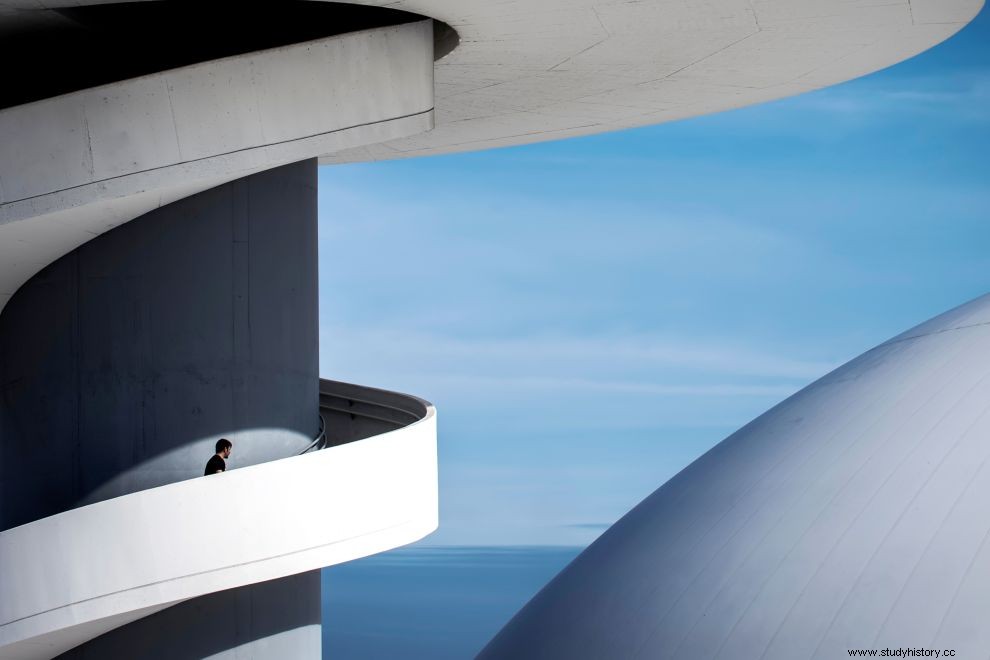
Ήδη από το 2007, όταν έκλεισε τα εκατό του χρόνια (που εορτάστηκαν με μια σειρά λαμπρών εκδηλώσεων στη Βραζιλία), η υγεία του είχε κλονιστεί και χρειάστηκε να νοσηλευτεί αρκετές φορές, παρόλα αυτά, παρέμεινε ενεργός μέχρι και το ξεκίνημα του 2012. Τον Ιούνιο εκείνης της χρονιάς, πέθανε η κόρη του, Άννα Μαρία, σε ηλικία 82 ετών (το μοναδικό του παιδί). Λίγους μήνες αργότερα, στις 5 Δεκεμβρίου του 2012, μόλις δέκα ημέρες πριν κλείσει τα 105 , έφυγε και ο ίδιος από τη ζωή, από καρδιακή ανακοπή σε νοσοκομείο του Ρίο, αφήνοντας μια τεράστια παρακαταθήκη πίσω του.
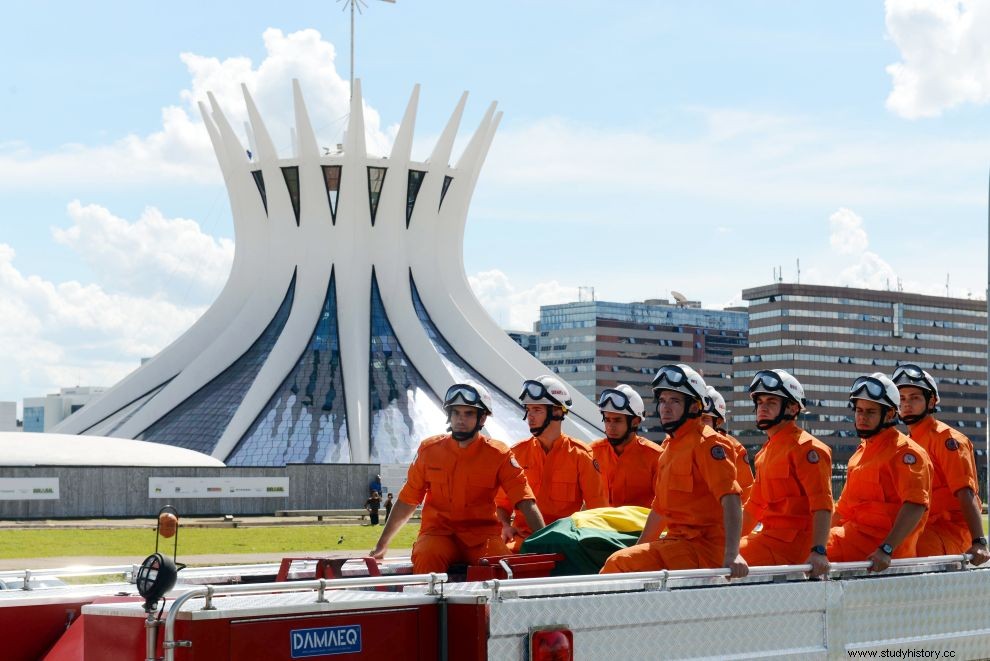
Ο Οσκάρ Νιεμάιερ υπήρξε ένας από τους "πυλώνες" της μοντέρνας αρχιτεκτονικής, πρωτοπόρος της πολεοδομικής επανάστασης, εραστής της νεωτερικότητας, ποιητής του οπλισμένου σκυροδέματος, εφευρέτης και δημιουργός στα μοτίβα και τα υλικά, υπέρμαχος της λειτουργικότητας, πιστός υπηρέτης των χαρακτηριστικών της επινόησης με κύρια εργαλεία τις καμπύλες και το φως, αναμορφωτής του δημόσιου χώρου, συνεπής και αμετανόητος κομμουνιστής, εκφραστής της ελεύθερης χωρίς αναστολές αισθητικής, λάτρης της χαράς και της ομορφιάς.
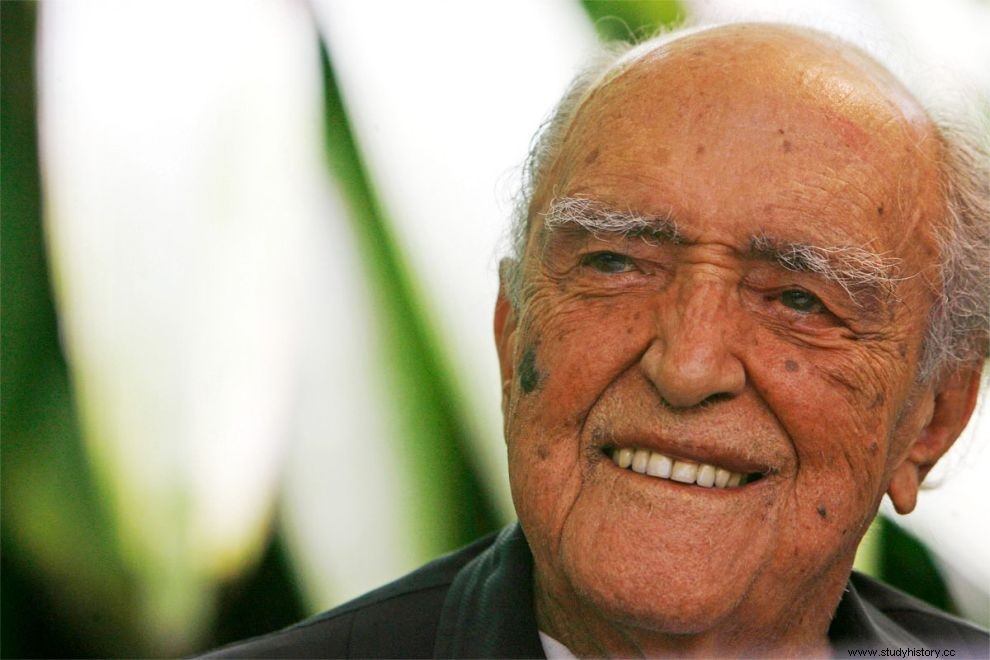
Τολμηρός, ανεξάντλητος, πραγματικός δάσκαλος, πηγή έμπνευσης για τον αδέσμευτο φορμαλισμό, γεμάτος λύσεις και φαντασία, ευλογημένος με μια ουμανιστική δυναμική, ο Νιεμάιερ δεν υπήρξε μόνο ένας λαμπρός αρχιτέκτονας, αλλά και ένας περίφημος αναλυτής του ευρύτερου περιβάλλοντος της τέχνης. Τα περίπου 800 έργα που άφησε πίσω του, με το πρότζεκτ της Μπραζίλια να αποτελεί το αποκορύφωμα της προσφοράς του, αντανακλούν τον διαχρονικό, αυθεντικό τρόπο έκφρασής του, όπως τον διατύπωσε ο ίδιος, τέσσερις μήνες πριν τον θάνατό του:"Η αρχιτεκτονική δεν είναι μπίζνες , δεν είναι απλώς τεχνική να ορθώνεις κτίρια ύψους 100 μέτρων. Αρχιτεκτονική είναι να παρέχεις το όμορφο περιβάλλον που θέλουμε. Η αρχιτεκτονική είναι να εφευρίσκεις. Έτσι, στην περίπτωσή μου, η πρόκληση που με αφορά, είναι να δημιουργώ κάτι διαφορετικό".
